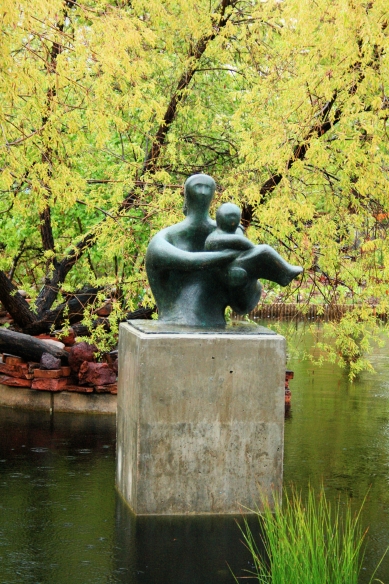
Henry Moore’s "Mother and Child" heralds spring at the Denver Botanic Gardens. Photo: Laurel Kallenbach
I’ve had the privilege to see the exquisite sculptures by 20th-century British sculptor Henry Moore (1898–1986) at the Denver Botanic Gardens in spring, summer and winter. (I missed fall because I was traveling elsewhere.)
Moore’s iconic, modernist masterpieces have been incorporated into the lovely garden settings since last March.
But hurry: the Moores leave Denver after January 31, 2011, and they shouldn’t be missed.
Evergreen Art
The beauty of viewing art al fresco is that the sculptures reflect moment by moment what’s happening in the landscape. (And Moore, who was heavily influenced by the natural world, surely meant for his bronzes to be enjoyed outdoors.)
Moore’s smooth surfaces and organic lines transform by the hour as the light shifts. The sculptures transmogrify by the season as the foliage around them blooms or withers.
Compare the outdoor experience to seeing a piece of art in an indoor museum, where the artificial light is static and the surrounding walls do not change shape or color.
And, even though they’re abstract, Moore’s sculptures feel very human and tactile. The smooth surfaces, although bronze, have a skin-like quality.
Green in the Gardens
You should visit the Denver Botanic Gardens to enjoy its plants, flowers, fountains, pools and outdoor art—but here’s another benefit: the nonprofit organization is also committed to sustainability.
- In July 2009, the Gardens started installing solar panels to generate renewable electricity from the sun. The solar array currently in place produces 10,000 watts, one third of the Gardens’ planned total array of 30,000 watts, which will be enough to completely power six Denver homes.
- Denver Botanic Gardens’ research staff collaborates with organizations and agencies to protect and conserve many of Colorado’s rarest plant species.
- The research staff also works to control and eradicate invasive plants, considered second only to habitat destruction in causing species extinctions. The staff conducts research on the impacts of invasive species such as tamarisk, saltcedar, Russian olive, and cheatgrass.
- The Gardens are an invaluable resource for gardeners who want to learn more about low-water, high-altitude growing.
—Laurel Kallenbach, freelance writer and editor

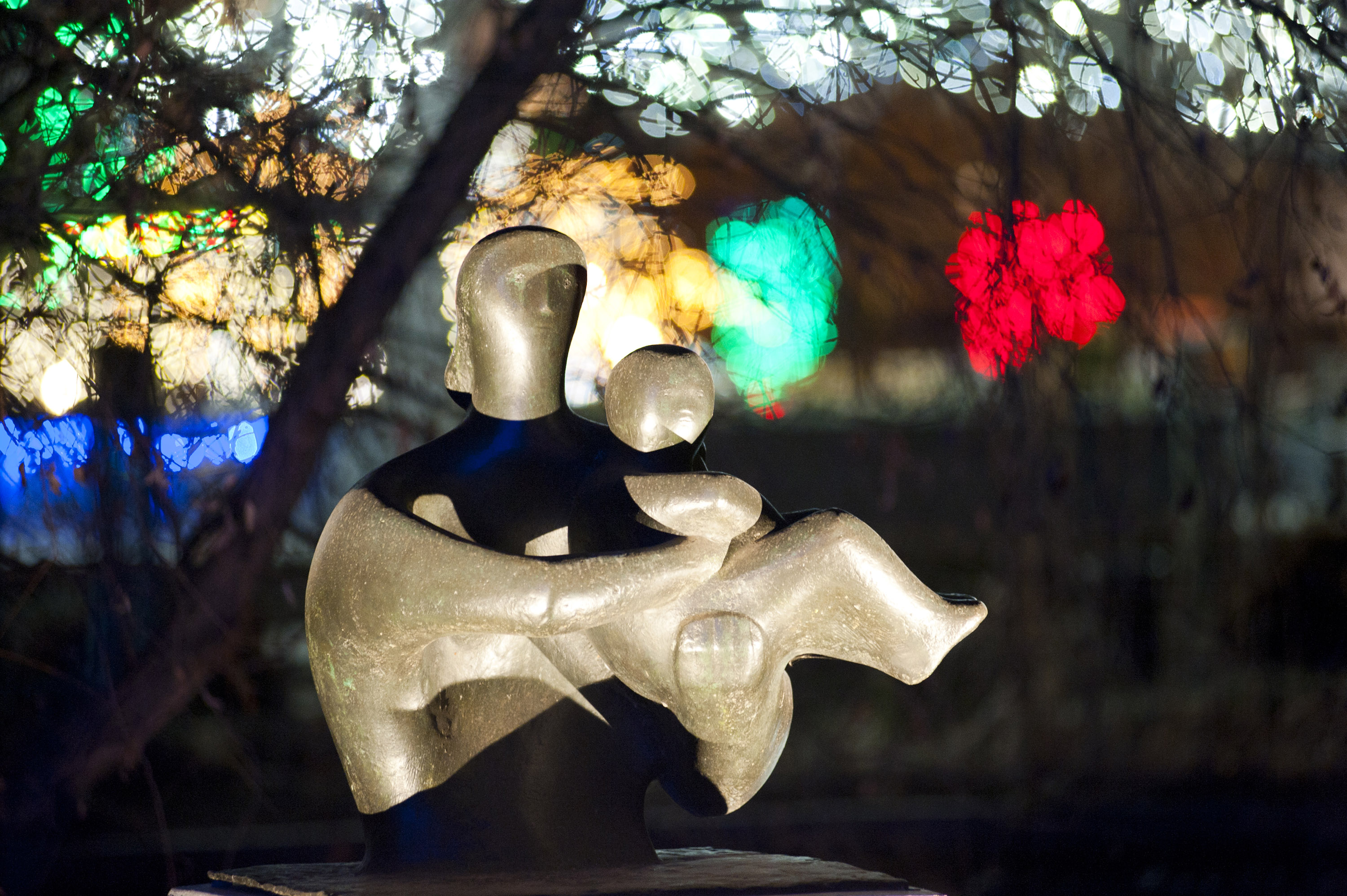
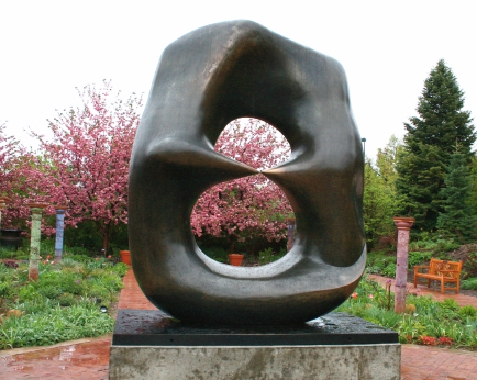
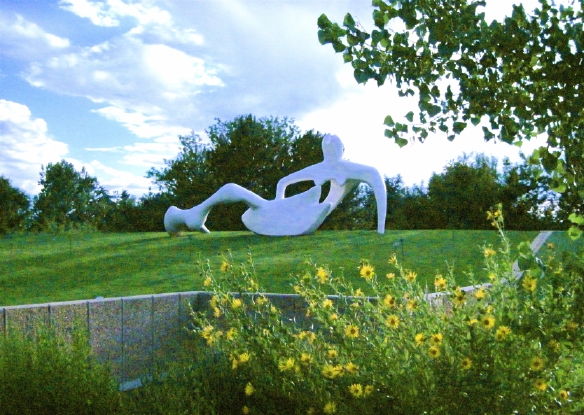
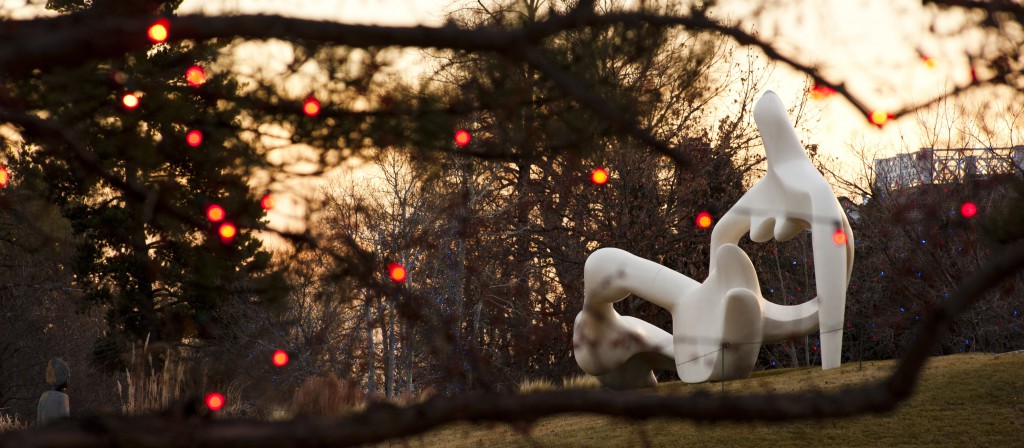
I can’t recall what season it was when I saw the Moore sculptures at the botanic gardens, but it was either spring or early summer and you are right–they are glorious! Our botanic gardens are such a treasure–one of the nicest I’ve seen anywhere. I’m not a winter visitor, tho–so I’ll trek back when the warm weather roles around again. Thanks for this last vision of the Moores–
It will be sad to see the Moores go, but the glorious gardens still remain and are riveting. And, they now have wireless in the Gardens, so visitors can stroll, have lunch, catch up on email and post to their Facebook pages–all from the beauty of the outdoors.
I think it’s a wonderful idea, especially for those apartment dwellers who don’t have a back yard where they can work outdoors in nature. Brilliant!
Laurel, I love your seasonal choices in the photos–just the right season for each piece! I haven’t seen the Moore sculptures, and may not get there because of a crazy month, but you’ve certainly made me want to go. Thanks for the vision.